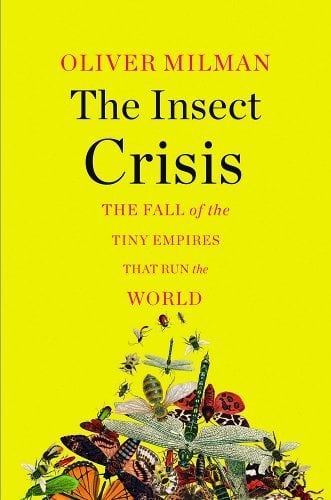
The subtitle of the must-read book The Insect Crisis by Oliver Milman is The Fall of the Tiny Empires that Run the World.
Tiny empires indeed.
Consider the following:
- Three out of four species on this planet are insects.
- There are more species of assassin fly on this planet (7,500+) than the entire world of mammals.
- There are more than 160,000 species of flies that we’ve identified. And despite our general disregard for them, are responsible for chocolate, yes, chocolate.
- Even mosquitos, unloved as they are, are critical pollinators to plants such as orchids. Only 10 of the 3,500 species of mosquito are responsible for transmitting diseases to humans.
- We’ve identified more than a million species of insects but scientists know there are many more yet to be identified.
Unfortunately, a growing number of insects, known and unknown, are declining quickly. In Netherlands, butterflies have declined by at least 84% since 1890. Southern Britain has seen moth populations drop by 40%. And in the US, a number of native bumble bee species are now endanger and, here in Southern Oregon, we have likely witnessed the exticion of the Franklin’s bumble bee.In fact, there are more species of assassin fly ( than there are of all mammals, birds and fish.
It’s practically impossible to comprehend the enormity of species of insects we share the world with, which is perhaps part of the challenge in protecting them.
Because even with record declines of some species, we still find ourselves getting bitten by mosquitos, or discovering trails of ants in our homes. So it’s natural to assume that insects are, well, everywhere. Seeing insects on any given day feel about as certain as the sun rising in the morning.But Milman suggests that this sun is in danger of not rising one morning.
Scientist Dave Goulson labeled call this crisis the “unnoticed apocalypse,” which writers like he and Milman are trying to rectify.
To be clear, not all insects species are on the decline. Some are growing in number, though many of these would be considered pests, like mosquitos or cockroaches. Insects will always be around, long after we’re gone, but exactly which species will be around is the question.
Milman writes about the monarch and its many struggles, in the US and in Mexico, a migration that is truly mind-boggling to consider. But pesticides and climate change have taken a brutal toll, particularly on the Western species.
It’s one thing to worry about the polar bears. It’s another to consider the loss of a tens of thousands of species of insects, most of whom we will never know even know of before they are gone. And, odds are, most humans won’t miss most of these insects. But birds will. And countless other creatures who have evolved to eat just a handful of species. This chain of events is what we will all notice. Foods that rely on pollinators could become prohibitively expensive for most of us. And all those birds we have grown familiar with will also be gone.
There are moments in this book when the anecdotes become overwhelmingly depressing but, for the most part, Milman keeps the book focused on not just identifying the many crises insects face but on finding a way forward.
We can all do something about it. Like letting our lawns go wild. Leave more leaves on the grass. Planting native species. Avoiding pesticides whenever possible. And for the love of God, leaving Roundup alone and, better yet, urging your retailer to stop stocking this cancer-causing chemical.
Most of all, we need to revise our worldview to embrace a world that may appear messier, more chaotic yet is ultimately more attractive to insects. If we can do this sooner than later we have a chance.
I hope more people read this book and act on it. Because when it comes to saving insects it really is about all the small things we can do. It will take millions of us making millions of small changes to save a few billion or trillion insects.
John is co-author, with Midge Raymond, of the Tasmanian mystery Devils Island. He is also author of the novels The Tourist Trail and Where Oceans Hide Their Dead. Co-founder of Ashland Creek Press and editor of Writing for Animals (also now a writing program).

